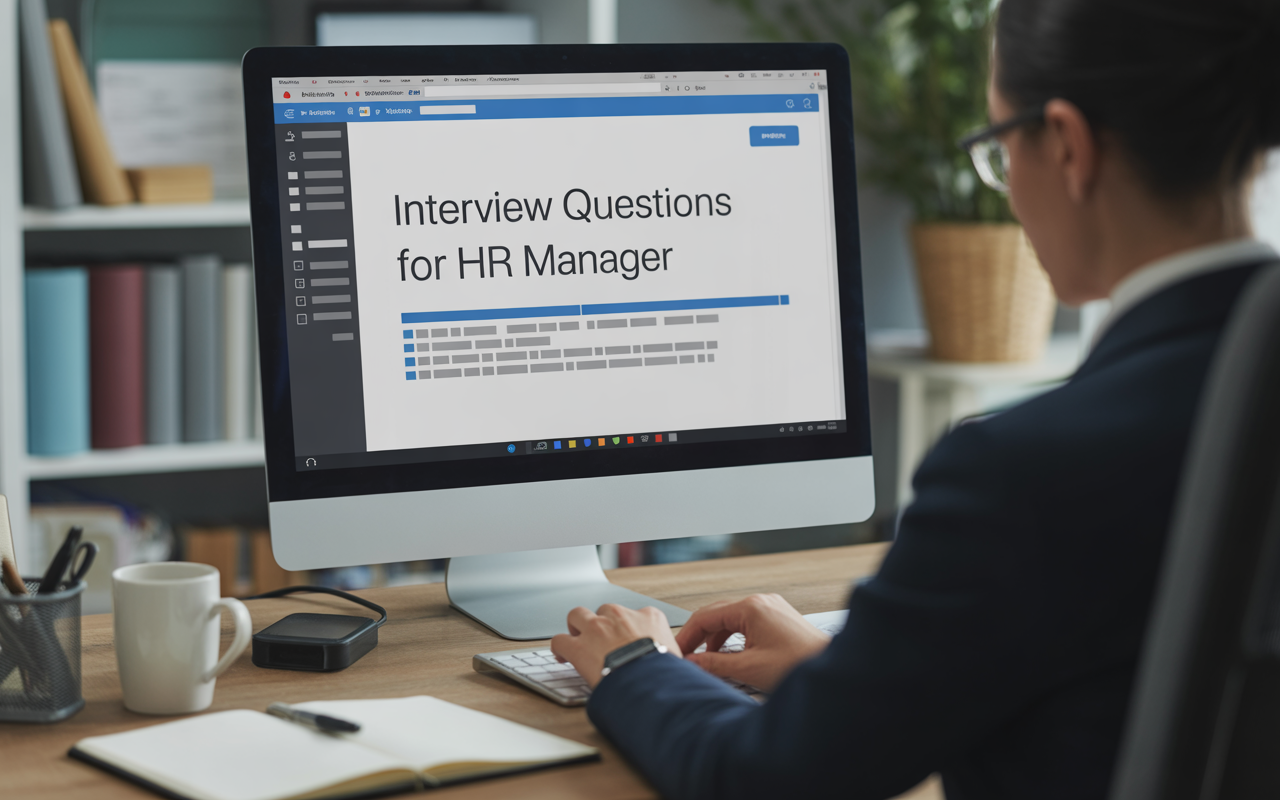Skip ahead
The candidate across from you looks excellent on paper:
- She went to a top school.
- Worked at a few impressive companies before interviewing with yours.
- She seems to say all the right things.
But is she the right candidate for your company?
Many startups delegate the interviewing process to a menagerie of stakeholders, all with little training on how to ask questions in the right way.
With lean teams and high stakes, a single mis-hire drains time, money, and morale you can’t afford to lose. That’s why the interview process is particularly important to get right. Fortunately, there’s a framework available that can help your team ask the right questions: the Competency-Based Interviewing (CBI) framework.
In this guide, I’ll share how I’ve implemented the CBI framework at fast-growing startups to weed out bad-fit candidates and find diamonds in the rough.
What is the Competency-Based Interviewing (CBI) Framework?
Don’t let the name fool you, this framework isn’t a load of technical psycho-babble.
The Competency-Based Interviewing Framework is simply a matter of structuring questions in a way that allows you to determine if the candidate can actually do the job.
This means asking them to share specific examples from their career of when they have shown the skills, behaviors, and experience needed to succeed in your organization. This line of questioning enables interviewers to assess a candidate’s technical expertise, company fit, and whether they’re capable of delivering meaningful impact.
CBI leverages four principles:
- Past behavior as a predictor: Take stock of what a candidate has achieved in prior roles. Identify the kinds of projects they’ve worked on and what positive outcomes they helped achieve. Ask about the types of teams they’ve been a part of and the sectors and industries they’ve served. Focus on their ability to deliver results and their approach to getting things done.
- Identifying relevant skills: Evaluate the specific technical and interpersonal skills necessary for success in the role. This includes hard skills as well as soft skills like active listening, collaboration, and adaptability. The goal is to ensure the candidate possesses the essential competencies required to excel in the role’s day-to-day responsibilities and meet core objectives.
- Structured interviews: Ask questions that focus on specific situations and require candidates to describe their actions and the outcomes they achieved. These questions can evaluate technical, project-based experience or a candidate’s approach to teamwork, managing shifting priorities, and communication.
- Evidence-based answers: Look for candidates to provide specific examples from past experiences to demonstrate their skills and abilities. You want to hear how a candidate has applied their competencies and expertise in real-world situations.
This is all great in theory, but let’s move on to how you can use this framework in your interviewing process.

How to Structure Competency-Based Interview Questions
Now that you know what CBI is, let’s get to the brass tacks: how do you ask the right questions?
Simple. Ask questions that test a variety of skills and attributes with a focus on outcomes rather than inputs.
Invite candidates to share real-life examples from their past professional work. The specific skills you choose to probe for and measure should align closely with the requirements of the role and your sector (make sure you have an Ideal Candidate Profile and expertly crafted job description ready).
Essentially, competency-based interview questions are a way to get real stories out of people.
Instead of asking a random assortment of questions that may or may not lead you to relevant information, ask for specific examples of when they’ve used certain skills and how they might apply their experiences to the open role at your startup. Doing this enables you to see how candidates think and handle real-life situations — and not just what they say they can do.
You might ask open-ended questions such as “Tell me about a time when…”, “Give me an example of…”, or “Can you describe a situation where…” to encourage candidates to share detailed responses.
With that in mind, focus your questions on the key themes most critical to the role and your organization’s success. Be prepared to ask questions related to core aspects of the role and your startup environment, including:
- Skills and experience
- Collaboration, conflict management, and chemistry
- Problem-solving and decision-making
- Leadership
- Startup readiness
I’ll walk you through each of these and include sample questions to use.
Skills and Experience
Assess whether the candidate has the technical acumen and expertise to meet or exceed the role’s core functions and responsibilities.
Example questions include:
- Give me an example of a particularly complex project you worked on. What was your role in its execution, and how did you ensure the work was delivered to a high standard?
- Can you describe a situation where your subject-matter expertise directly influenced a project’s success? What did you contribute, and what was the result?
- Tell me about a time when you had to quickly learn a new tool or technology to complete a project. How did you approach it, and what was the outcome?
Collaboration, Conflict Management, and Team Chemistry
Determine who the candidate is beyond their primary skill set — what characteristics and qualities will they bring to organizational culture and team chemistry?
Example questions include:
- Give me an example of a conflict you experienced with a colleague or stakeholder. How did you handle it, and what did you learn from the situation?
- Can you describe a time when you helped build or contribute to a positive team culture? What actions did you take, and how did they affect team performance or morale?
- Can you give me an example of a time you were responsible for completing one aspect of a project before handing it off to another team member or business unit? How did you ensure you delivered your part effectively and set them up for success?
Problem-Solving and Decision-Making
Assess how candidates approach challenges, analyze information, and make decisions amid uncertainty, ambiguity, or shifting priorities. Determine how they learn new skills, adapt, and handle feedback in fast-paced environments.
Example questions include:
- Tell me about a time when you faced a complex problem without a clear solution. How did you approach it, and what steps did you take to resolve it?
- Can you give an example of a time when you had to make a high-stakes decision with limited information? What was your thought process, and what was the result?
- Describe a situation where you received critical feedback or objectives changed significantly in the middle of a project. How did you respond, and how did it influence your next steps?

Leadership and Taking Initiative
Evaluate their ability to motivate others, lead projects, or influence decisions — even informally. Gauge proactiveness and ability to take ownership without needing close supervision.
Example questions include:
- Tell me about a time when you stepped up to lead a project or initiative without being asked. What motivated you, and how did you drive it forward?
- Can you share an example of a time you influenced a team decision or direction, even if you weren’t in a formal leadership role? What did you do?
- Describe a time when you identified an opportunity for improvement and took action on it. What was the impact of your intervention?
Startup Readiness
Even the most capable professionals may not be the right fit for a startup environment. Ask questions that get to the heart of a candidate’s versatility, adaptability, and appetite for thinking outside the box.
Example questions include:
- Startups often require people to wear multiple hats. Can you tell me about a time when you had to go beyond your formal job description to get something done?
- Describe a situation where you had to quickly pivot due to changing goals or priorities. How did you adapt, and what was the outcome?
- Can you give an example of a time when you had limited resources or support but still found a way to deliver results? How did you approach it?
Benefits of Using the Competency-Based Interviewing Framework
I’ve seen it time and time again: hiring the wrong person can kill your startup.
Competency-based interviewing helps you avoid that by focusing on what actually matters: real proof that someone can do the job, not just what’s on their resume or how they come across conversationally.
Data shows businesses prefer the competency-based interviewing framework as well.
According to a recent study by Gitnux, a market research platform, 40% of interviewers regularly use competency-based questions, and 52% of HR professionals believe structured interviews are more reliable than unstructured ones. Providing clear guardrails for interviewers is essential, not only for consistency but also for surfacing genuine candidate quality. This is especially important given that the same study found 41% of job seekers admit to exaggerating their qualifications during interviews.
Additional benefits to the competency-based interviewing framework include:
- Smarter hiring decisions: Assess a candidate’s past behavior through targeted, evidence-driven questions to more accurately predict future job performance and reduce costly hiring mistakes.
- Identifying strengths and weaknesses: Identify specific examples that demonstrate where the candidate excels and how they can add unique value beyond simply meeting the role’s basic requirements. At the same time, look for areas where they may lack experience or need additional support so you can set realistic expectations about their fit and development needs.
- Reducing interviewer bias: A consistent question structure creates a fairer evaluation process and reduces the influence of unconscious bias or personal preferences.
- Supporting stronger onboarding and development: Insights gathered during the interview can directly inform onboarding plans and professional development goals tailored to each new hire.
- Prioritizing organizational culture: Beyond technical fit, the framework helps assess how a candidate collaborates, manages conflict, and contributes to team chemistry.
So you know how to ask questions… but what should you listen for? Read on as I share another framework you can use to evaluate answers and determine whether the candidate across the table (or Zoom) is the real deal.
How to Assess Answers to Your Questions: Use the STAR Method
CBI helps you ask the right questions, but how do you know you’re getting the right answers?
That’s where the STAR method comes into play (I promise, this is the last acronym I’ll give you).
STAR stands for Situation, Task, Action, Result.
Your team can use this framework as a checklist to assess the strength of each answer a candidate gives you.
Here’s how:
- Situation: Ask the candidate to clearly describe the problem, challenge, or opportunity they faced. Encourage them to provide enough context so you can understand why this situation was significant. Look for details such as who was involved, when it happened, and what was at stake. Assess whether they can concisely set the scene to frame their role in the intervention effectively.
- Task: Have them explain what their specific responsibility or objective was in that situation. Listen for clarity on what needs to be achieved or decided. You want to know what role they played versus what the team overall was tasked with. This helps determine their level of ownership and accountability in the example.
- Action: Prompt the candidate to detail the specific steps they took to address the task. Encourage them to describe how they approached the situation strategically or creatively. Look for information on how they prioritized actions, collaborated with others, or overcame obstacles. Assess whether their choices demonstrate the skills and behaviors your role requires.
- Result: Ask about the outcome of their actions and how it impacted the team, client, or organization. Seek measurable results where possible to gauge their effectiveness. Also, listen for any reflections on what they learned or would do differently next time. This shows their ability to evaluate their performance and grow from experience.
How Startups Can Integrate The STAR Method In Any Candidate Interview
You can use the STAR method for any role in your startup by asking questions that match the key skills and behaviors you’re looking for. This helps you consistently see how candidates have handled different work situations in the past and makes your interviews fair and easy to compare across different jobs.
To use the STAR Method effectively in your interview process:
- Train all hiring managers and interviewers on how to use the STAR method consistently so they can effectively probe for complete examples and avoid leading questions.
- Develop a bank of tailored competency-based questions for each role (you remembered to create an Ideal Candidate Profile, right?). Make sure that these questions also align with your startup’s values, culture, and strategic priorities.
- Encourage follow-up questions to further probe and uncover depth, clarify vague answers, and confirm the candidate’s specific contributions and capabilities.
- After the interviews, bring together the hiring panel to review what was heard, align on findings, and build shared confidence in hiring decisions.
- Monitor and review the effectiveness of STAR-based interviews over time, using feedback and hiring outcomes to continuously improve your process.
Note: All of this is for naught if you do not ask the same baseline questions to each candidate. While you can (and should) probe further into areas of interest, start with the same set of questions so you can compare apples to apples.
We’ve covered quite a bit of ground here!
In this guide, you’ve learned how to ask questions in a way to evaluate the skill of a candidate and how to parse through their answers. Now I have a special gift for you to turn HR and hiring into a superpower for your startup.
Hiring is Just One Part of HR: Download the Startup HR Survival Guide For the Rest
As we’ve discussed, Competency-Based Interviewing helps you avoid costly hiring mistakes by focusing on real evidence of what candidates have actually done, not just what they say they can do.
By integrating CBI and the STAR Method into your hiring process, you’ll make smarter decisions, reduce mis-hires, and build the strong, adaptable team your startup needs to succeed and continue growing.
Hiring is a key piece of your startup’s success, but it’s only one element of a robust and effective HR strategy. The most successful startups know that their path to scaling from seven to nine figures will be made possible by the practices they follow to attract and retain top performers in their company.
I mapped out this and more in my Startup HR Survival Guide. In this free guide, you will learn:
- How HR can drive growth
- How to hire
- How HR evolves as your company grows
- And more!
Fill out the form below to download the free guide and put your company on the path to hypergrowth.

Nahed Khairallah